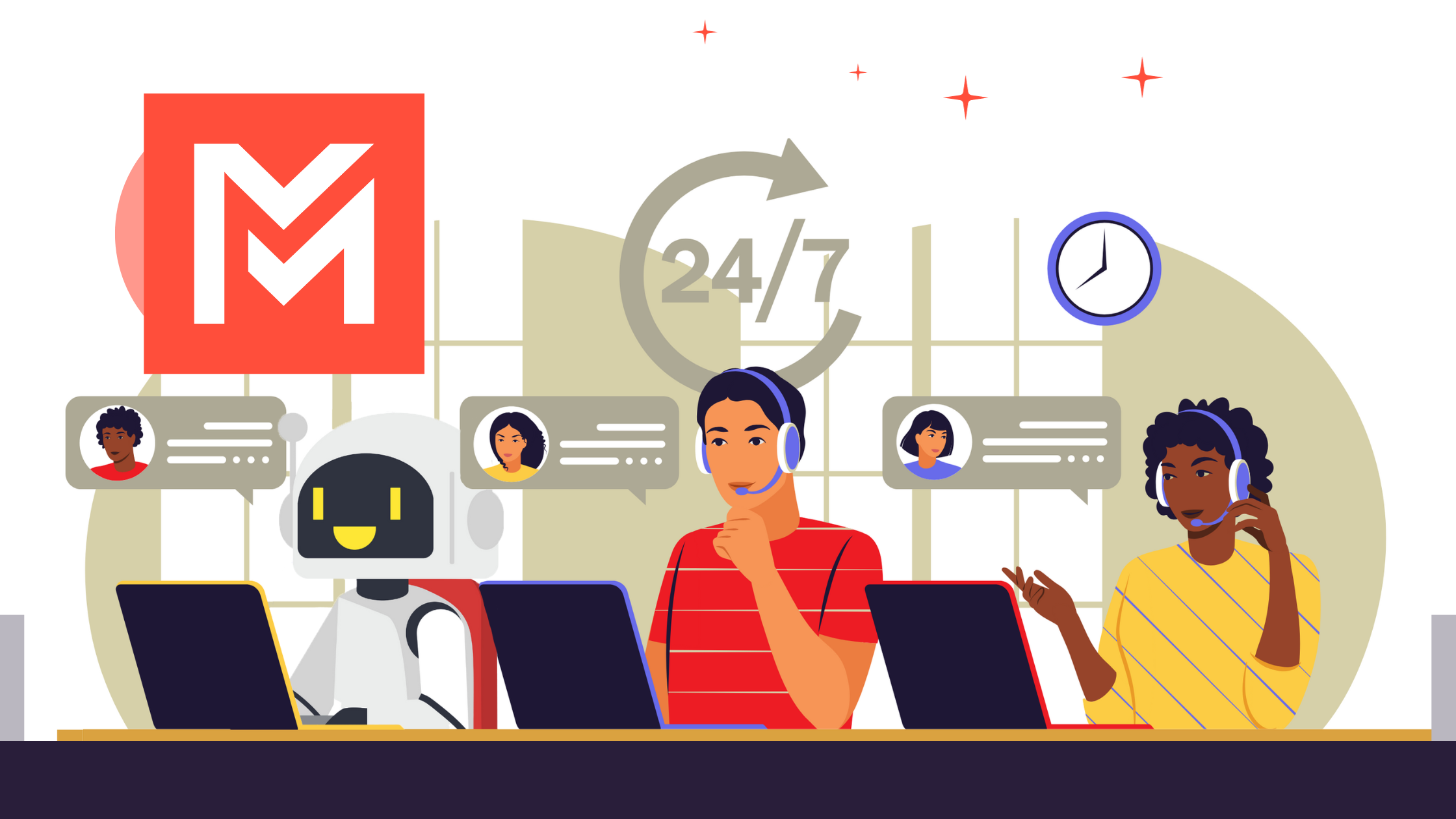Today we’re exploring trends in AI Customer Service. When implemented effectively, this technology creates improved service and higher customer satisfaction. At Movius, we take great pride in the development of artificial intelligence-driven products designed to enhance customer service for our clientele.
AI Customer Service Benefits
Much like other industries, customer service is being transformed by AI innovations. According to industry surveys, working in customer service is one of the top 10 most stressful jobs with turnover rates up to 45%. It can be a brutal job with long queues of customers with needs and complaints, where agents are expected to reach certain metrics and perform their tasks according to prescribed workflows each day. According to research by Adobe, 92% of workers report that AI makes their jobs easier.
Furthermore, McKinsey research estimates that AI could add up to $1 trillion in value annually in the global banking sector alone, much of that number by implementing AI in their customer service workflows. In a study that introduced generative AI-based conversational assistants to 5,179 customer service agents of a Fortune 500 software firm, there was a 14% increased productivity as measured by issues resolved per hour, with novice workers benefitting the most. The company also saw reduced manager calls, improved employee retention, and improved customer sentiment.
Such stats are why we are now seeing 3 trends in AI customer service: 24/7 self-service options, personalization and customer insights, and intelligent triage of customer support requests.
Trend #1: 24/7 Self-Service Options
Financial institutions have faced challenges in engaging customers through mobile apps. People spend half the time on bank apps compared to shopping or gaming apps. Because two-thirds of millennials expect real-time customer service, companies are using AI to meet this demand. 75% of financial services customers expect consistent cross-channel service and use multiple channels when available. AI chatbots and conversational voice AI help meet this demand while keeping costs low. Self-service cross-channel service options include chatbots and conversational voice AI.

Chatbots
Customer service chatbots simulate conversation with users to provide customer support and assistance using Natural Language Processing (NLP), Generative AI, or a combination to respond in a conversational manner during text interactions between humans and computer systems.
Not only can customers interact with chatbots over websites and SMS, chatbots are also hosted on platforms such WhatsApp, WeChat, and LINE. Movius provides a chatbot service to our users of these platforms. Our bot can route customers to their preferred employee at a business and collect any necessary information from the customer before making the transfer. According to market research, the retail banking industry, for example, could save $8 billion a year by implementing AI chatbot technology.
According to research by Verint, 80% of customers expect their interaction with a chatbot to have some positive impact. The top positive expectations are that it will save them time and help them connect to an agent faster.
Conversational Voice AI
Conversational Voice AI involves using voice recognition and NLP during spoken interactions between humans and computer systems. Voice AI systems offer accessibility and hands-free interaction for customers.
Both options can handle routine and frequently asked questions that save time for both customers and human agents. Unlike the automated systems of the past, AI-powered chatbots and conversational voice ai can use multi-turn dialogues, context awareness, and intent recognition to offer more seamless interactions. But when needed, they escalate intelligently to customer service agents.
Trend #2: Personalization and Customer Insights
Personalization is critical to boosting customer satisfaction and increasing sales. Predictive analytics can help intelligently send product recommendations and personalized discounts or offers based on a customer’s behavioral profile. It can also detect unusual activity and anticipate their needs when they call in. This boosts sales and helps customers better find the services that meet their needs. Sentiment analysis tools also assist in personalizing responses by helping AI understand if a person is frustrated, confused, or angry, and respond accordingly.
Trend #3: Intelligent Triage of Customer Service Requests
Not only can AI assist in routing tickets, but it can help populate tickets with summaries and helpful tips for agents. NLP can analyze text from customer support tickets to understand and extract key information. Integrating AI services into CRM and other systems offers businesses huge efficiencies.
The maturity curve
Leaders categorize the maturity of customer service adoption efforts into five levels.
- Level 1 – all customer service interactions are manual, high touch, and reactive
- Level 2 – some automated channels, but little self-service, and mostly reactive
- Level 3 – some proactive customer service, and some self-service
- Level 4 – proactive and self-service channels handle 70%-80% of interactions
- Level 5 – 95% of service interactions are digital and AI-powered
Thanks for reading this article on 2023 AI Customer Service Trends. If you’re exploring ways to get on board, we’d be happy to explore your options, so schedule a call today!
Sources:
- Can AI help customer service reps help customers better? | CBS
- Overcoming hurdles to AI chatbots in customer service | Johns Hopkins
- How AI Can Help You Serve Your Customers Better | US Chamber
- What Impact Will AI Have On Customer Service | Forbes
- The next frontier of customer engagement: AI-enabled customer service | McKinsey
- 10 AI Customer Experience Statistics You Should Know About | CMS Wire
You may also be interested in:
- Neuromarketing in the age of AI | Movius Blog
- Demystifying Artificial Intelligence | Movius Blog
- Impact of AI in SaaS applications | Movius Blog
- AI Conversations in Financial Services: How a Human Machine Approach Helps Financial Services Firms Enhance Client Relationships | Movius Webinar

